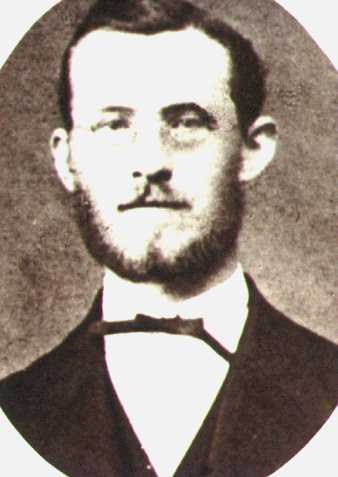Wilson's Creek
A synopsis of the Civil War battle near Springfield, MO.
With the election of a new president in 1860, the southern states made good on a promise to secede from the Union and form the new Confederate States of America. This happened shortly after Abraham Lincoln's inauguration in March of 1861.
My great great grandfather Julius Spindler was in the United States at the time, and on April 9, 1861, chose to enlist in the Union Army at the Arsenal in St. Louis. He was appointed to the 3rd Regiment under the command of Franz Sigel, in what amounted to be an almost wholly German regiment.
According the Julius's memoirs and other publications, he and his unit along with were eventually shipped out of St. Louis to the end of the rail line at Rolla, a small community of 600. From here this small army traveled by foot, horseback and wagon train, eventually reaching the southwestern Missouri city of Springfield, with a population of about 4000 at the time.
Here in Springfield, Union General Nathaniel Lyon assembled an army of 5300 soldiers. They spent their time drilling and procuring supplies to feed the troops. According to William Wherry, the men often "marched with bleeding feet and parched lips during those blistering summer days."
In early August Lyon became aware of an approaching mass of over 10,000 Confederate soldiers under the command of Brig.Gen. Ben McCullough and General Sterling Price. Determined to drive the southerners out of this divided state of Missouri, Lyon and Sigel devised a battle plan where Lyon was to attack the rebels after a night march, at Wilson's Creek, about 20 km south of Springfield. Sigel, with 1200 men, was to take a side road and surprise the Confederates from behind, with both attacks being planned for the break of dawn.
Julius Spindler was with the 3rd regiment which, under Sigel's command, arrived just one mile from the enemy's camp at daybreak. Hearing the sound of gun and cannon fire from General Lyon's attack, the 3rd regiment surprised the southerners at breakfast and quickly gained ground, forming a battle position eventually in a nearby cornfield. The Confederates were able to regroup, and with reinforcements which created an overwhelming advantage in numbers, attacked Sigel's command forcing a retreat. The battle as far as the 3rd was concerned was now over. The regiment, having incurred heavy losses was lucky to escape.
With Sigel's flank attack effectively parried, the southern soldiers were now able to concentrate fully on General Lyon and also forced his army to retreat back to Springfield. During the heat of the battle, General Lyon was killed. The Confederates had clearly won the first major battle of the war on Missouri soil.
Julius's 3rd regiment retreated first to Springfield and then to Rolla. The volunteers were then shipped back to St. Louis where they were discharged from their military duties, with the opportunity to reenlist, which many of the men chose to do. Julius, having received an offer from his former employer in Germany, chose to leave the war torn nation and return home to his native land.

The American Civil War was to continue on for another four years, ending with the South's surrender at Appamatox Court House in Virginia. The United States was united once again. President Lincoln was reelected to the White House, but was assassinated by actor John Wilkes Boothe only a few days after the final surrender.
For information on the battle of Wilson's Creek, check out these web sites:
Bloody Hill, Civil War Battle at Wilson's Creek
Wilson's Creek and the Death of Lyon
©1999 [email protected]